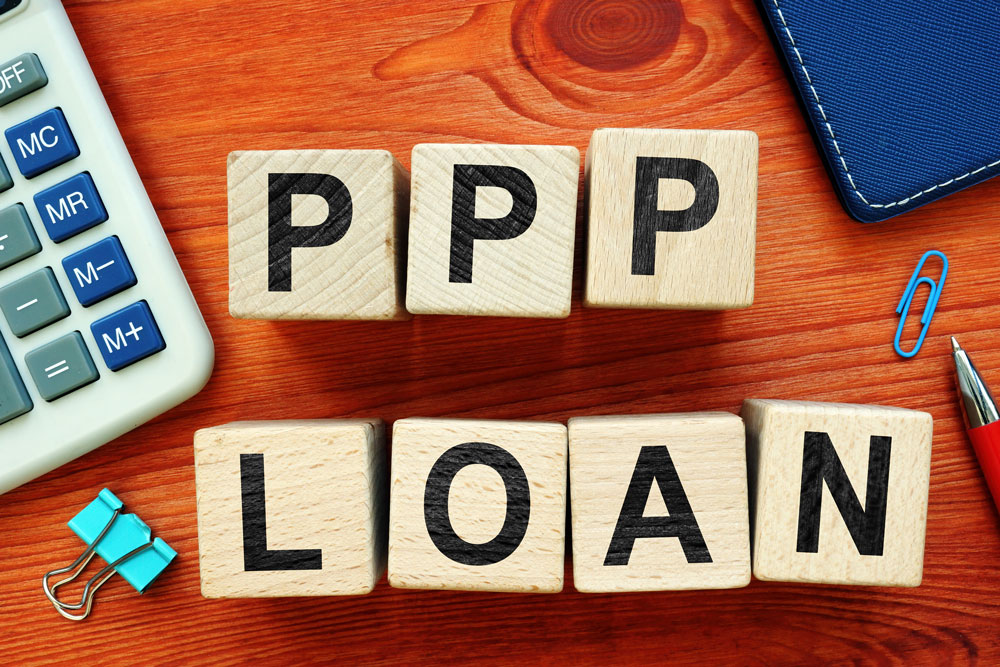Your Favorite Orange County Bookkeepers Want to Help You Navigate Through the PPP Loan

Patty Hansen
As all our businesses navigate through the unknown of Covid 19, the government PPP Loan is available right now to help support businesses in their struggles during these unprecedented times.
Not only can the PPP loan keep your business afloat during these trying times, if the money is allocated to specific categories, the loan can be forgiven in its entirety. Your favorite bookkeepers at Team One Accounting are committed to help your business maneuver through PPP applications and track your expenses to ensure that you get the most optimal use out of the PPP loan. Please reach out to us for help!
We have outlined best practices to understand and track this loan. The “forgiveness” application will involve proving you have used the loan for 75% payroll at least and other specifics to Not have to pay the funds back to the SBA.
Tracking of this loan is within our bookkeeping expertise, call on us to help you.
- Tracking Loan Spending: In order to receive loan forgiveness, the forgiveness must be applied for separately at the end of the spending period (8 weeks after the loan is granted). The forgiveness application will be reviewed and approved by a bank employee. In order to ensure the loan is forgiven, you want make sure your expenses are easily traced and accounted for. Do not assume that the bank associate understands accounting! If you need to move the loan funds to a different bank or account to pay qualified expenses, move the whole loan amount at once so it is 100% easily trackable.
- Qualified Expenses: Keep in mind that your loan will be forgiven as long as the proceeds are used to pay the following expenses during the 8-week period:
- 75% Payroll Use Requirement: Under current SBA rules, at least 75% of the loan proceeds must be used for payroll costs or NOTHING will be forgiven. In other words, do not spend more than 25% of the loan proceeds on qualified non-payroll expenses. Payroll Costs includes all salaries, wages, commissions, and other cash compensation paid to employees up to $100,000 of annualized pay per employee (i.e., $15,385 max for the 8-week period per employee). Qualified payroll expenses also include healthcare, retirement, and state tax expenses paid for employees. It does NOT include the employer’s portion of FICA and Medicare taxes paid. It also does NOT include any sick or family leave paid for which a tax credit is provided under other CARES Act programs.
- 75% Employee & Salary Retention Requirements: In order to qualify for loan forgiveness, you cannot have reduced your number of employees or total payroll by more than 25% (excluding reductions of amounts over $100k). If you do, your loan forgiveness for qualified expenses will be reduced in similar percentage via certain equations not detailed here. If you have already reduced your employees or payroll amount, you have until June 30th to rehire the sufficient number of employees and meet the payroll minimum. Note, you do not need to hire back the same people or pay them the same amount, provided you get back to the same levels in the aggregate.
- Mortgage Interest: Only for interest, not principal, and only for obligations in place before February 15, 2020.
- Rent Payments: Only for leases in place before February 15, 2020.
- Utility Payments: Only for service agreements in place before February 15, 2020. This arguably includes cell phone expenses, fuel for cars, and interest on car loans.
- Business Debt Interest: Only for obligations in place before February 15, 2020.
- Refinancing EIDL Loans: Only for loans made between January 31 and April 3, 2020.
- Some Key Tips and Tricks: Current guidance allows for the following planning opportunities:
- While you cannot reduce employees or payroll more than 25%, you can INCREASE compensation for key employees. For example, hazard pay, time and a half, etc. It is not recommended you pay “bonuses” to higher management during the period. It is possible to justify routine bonuses if, perhaps there is a history of paying such bonuses and if they are paid in some reduced amount, but it generally doesn’t look good.
- Even if some amount of your loan is not forgiven for failure to qualify under the qualified expense limitations, you can immediately pay back that amount of the loan at the end of the 8-week period without penalty or interest. You can also keep the loan outstanding for two years from the date of your loan forgiveness application and pay the low 1% interest rate as a tax-deductible business expense. This maybe an advantage to you also.
Related Posts
Navigating Year-End Generosity as a Small Business Owner
By: Charlotte Van Dyck The holidays are a wonderful time to show appreciation, spread goodwill, and celebrate the relationships that keep your business moving forward. From employee gifts and bonuses to appreciation of clients and charitable giving, year-end generosity has both an emotional and a financial impact. When planned correctly, many of these seasonal expenses…
Read MoreClosing the Year Strong: How Holiday Decisions Impact Your Financial Reports and Taxes
By: Charlotte Van Dyck The financial decisions you make during the holiday season don’t just affect December. They shape your year-end financial statements and your tax return. Increased spending on marketing, payroll, equipment, gifts, and events directly impacts your profit, taxable income, and cash flow. Seasonal promotions and advertising often drive revenue growth, but they…
Read MoreGiving Thanks: Celebrating the Season of Gratitude as a Small Business Owner
By: Charlotte Van Dyck As the year winds down and Thanksgiving approaches, it’s the perfect time for small business owners to pause and reflect. Not just on profits and goals, but on the people and partnerships that make their success possible. The giving season offers more than a chance to say, “thank you.” It’s an…
Read More


